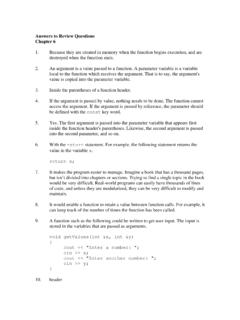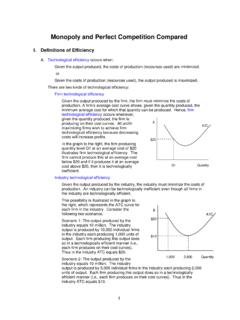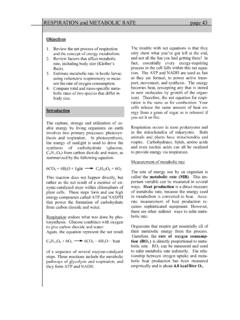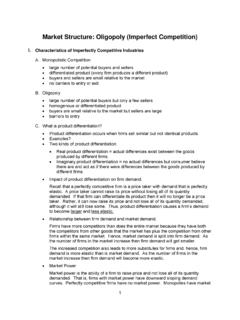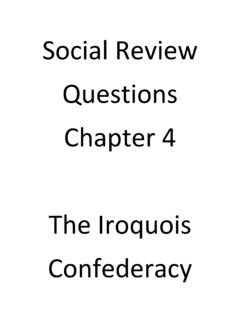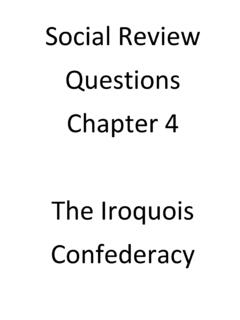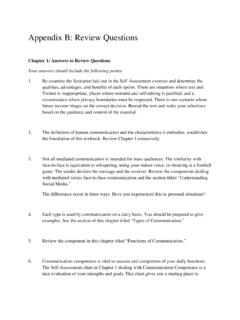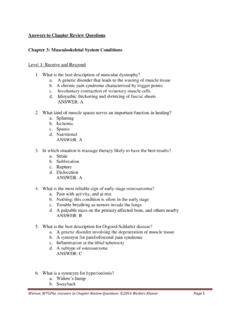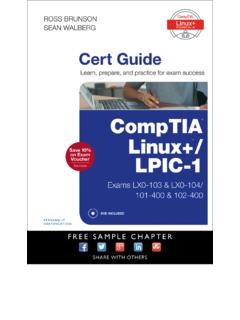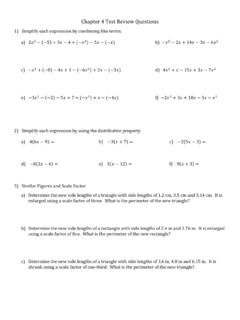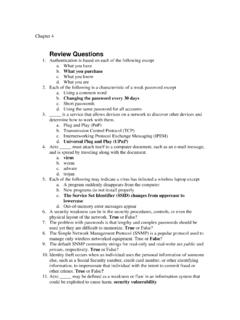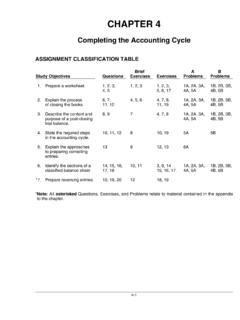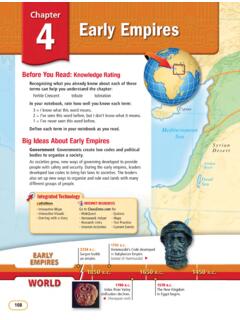Transcription of Chapter 4 - Answers to Review Questions
1 Answers to Review Questions Chapter 4 1. In an if/else if statement, the conditions are tested until one is found to be true. The conditionally executed statement(s) are executed and the program exits the if/else if statement. In a series of if statements, all of the if statements execute and test their conditions because they are not connected. 2. The trailing else provides code that is executed when none of the conditions in the if/else if statement are true. 3. A flag is a Boolean variable signaling that some condition exists in the program.
2 When the flag is set to false it indicates the condition does not yet exist. When the flag is set to true it indicates that the condition does exist. 4. Yes. The if statement can test any value that yields a Boolean value (true or false) or a numeric value. When testing a numeric expression, a nonzero numeric value is considered true, and the value 0 is considered false. 5. It takes two expressions as operands and creates a single expression that is true only when both subexpressions are true. 6. It takes two expressions as operands and creates a single expression that is true when either of the subexpressions are true.
3 7. Because they test for specific relationships between items. The relationships are greater-than, less-than, equal-to, greater-than or equal-to, less-than or equal-to, and not equal-to. 8. It visually sets the conditionally-executed statements apart from the surrounding code. This is so you can easily identify the code that is conditionally-executed. 9. relational 10. true, false 11. false, true 12. false 13. true 14. braces 15. true, false 16. default 17. nested 18. && 19. || 20. ! 21. left-to-right 22. && 23. || 24.
4 Block 25. strings (C-strings, specifically) 26. conditional 27. integer 28. integer constant 29. break 30. A) 1 B) 0 C) 0 D) 1 31. if (y == 0) x = 100; 32. if (y == 10) x = 0; else x = 1; 33. if (sales < 10000) commission = .10; else if (sales <= 15000) commission = .15; else commission = .20; 34. if (minimum) hours = 10; 35. if (amount1 > 10) if (amount2 < 100) cout << (amount1 > amount2 ? amount1 : amount2); 36. if (grade >= 0 && grade <= 100) cout << "The number is valid.
5 "; 37. if (temperature >= -50 && temperature <= 150) cout << "The number is valid."; 38. if (hours < 0 || hours > 80) cout << "The number is not valid."; 39. if (strcmp(title1, title2) < 0) cout << title1 << " " << title2 << endl; else cout << title2 << " " << title1 << endl; 40. switch (choice) { case 1: cout << fixed << showpoint << setprecision(2); break; case 2: case 3: cout << fixed << showpoint << setprecision(4); break; case 4: cout << fixed << showpoint << setprecision(6); break; default: cout << fixed << showpoint << setprecision(8); } 41.
6 C, A, B 42. false 43. false 44. true 45. true 46. false 47. true 48. false 49. true 50. false 51. true 52. false 53. false 54. T 55. F 56. T 57. T 58. The first cout statement is terminated by a semicolon too early. The definition of score1, score2, and score3 should end with a semicolon. The following statement: if (average = 100) should read: if (average == 100) perfectScore is used before it is defined. The following if statement should not be terminated with a semicolon: if (perfectScore); The conditionally executed block in this if statement should end with a closing brace.
7 59. The conditionally executed blocks in the if/else construct should be enclosed in braces. The following statement: cout << "The quotient of " << num1 << should read: cout << "quotient of " << num1; 60. The trailing else statement should come at the end of the if/else construct. 61. The if statement does not properly test the strings for equality. The strcmp function should be used instead of the == operator. 62. A switch statement cannot be used to test relational expressions. An if/else if statement should be used instead. 63. It should read if (!(x > 20)) 64.
8 It should use && instead of ||. 65. It should read if (count < 0 || count > 100) 66. The : and ? are transposed. The statement should read: z = (a < 10) ? 0 : 7.
